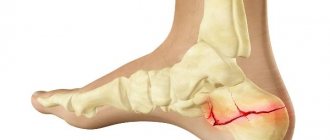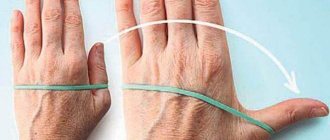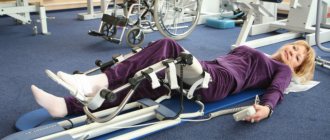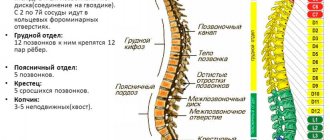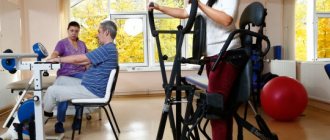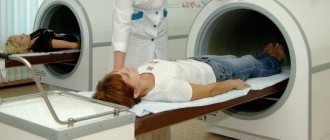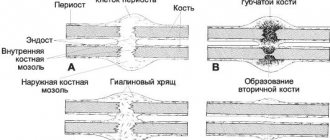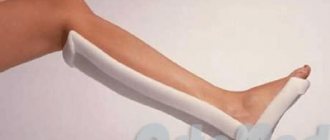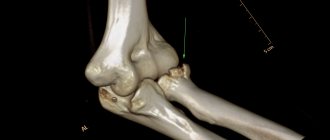Elderly people or athletes suffer from compression fractures of the spine. This type of pathology is formed due to excessive pressure on the vertebra at the time of its flexion. The anterior section is most often injured. Less commonly, complications may occur in the posterior spine. This dangerous type of injury is rare.
Most often, compression fractures of the spine occur at the locations of the 11th and 12th vertebrae and in the area of the first lumbar. Injuries in other areas are also possible but less common. Treatment tactics depend on the severity of the injury.
Classification
Compression injuries are classified according to severity. There are severe and uncomplicated compression fractures of the spine. Fractures without complications mean that there is no threat to the patient’s spinal cord. An uncomplicated fracture is divided into:
- the height of the anterior spine is reduced by half;
- the height of the anterior section is reduced by more than half.
A severe type of compression fracture of the spine is dangerous for a person, since a complicated injury damages not only the vertebrae, but the entire structure. According to statistics, such a defect accounts for about 5% of all diagnosed injuries to the musculoskeletal system.
The vertebrae in the cervical region are subject to a complex stage of injury, as they are the most vulnerable. Compression fractures of the spine also appear in the lumbar and thoracic regions. If the cervical vertebrae C1 and C2 are injured, this ends in the death of the victim.
Tips for choosing a corset
In order for the purchased corset to help with a spinal fracture, the patient needs to take into account the following simple rules. He needs:
- Determine the size of the belt and choose it specifically for yourself. You should especially carefully choose a retainer for children and non-standard people.
- Carefully study all modern fixing devices. Remember that they are made from two materials. Plaster and metal-plastic are used. Metal-plastic is not heavy, it is beautiful, it is worn under ordinary clothes. Such devices cost quite a lot, but they are very easy to use.
- When choosing a device, take into account your individual characteristics. For example, a person may have allergies, or other fixation devices may seem more attractive to him.
Causes
Reasons why a compression fracture of the spine may occur:
- due to the influence of force on the axis. If, when falling from a height, a person lands on his feet or buttocks;
- with latent development of osteoporosis. With this phenomenon, the likelihood of getting a compression fracture of the spine increases tenfold. It can occur even after minor force loads, since cartilage tissue loses strength due to the course of the pathology;
- infections affecting the bone structure. If a person has tuberculosis or osteomyelitis, the risk of getting a compression injury increases;
- when the bone structure is weakened. The injury occurs due to strong compression of the vertebra from the weight of the one above it. This leads to a compression fracture. A similar process can also occur as a result of degenerative changes;
- car accident;
- neoplasms of benign origin. More often, a fracture is provoked by an aneurysmal cyst formed on cartilage tissue or a hemangioma;
- thyroid pathology. Diseases of this organ weaken the bones. This happens due to an increase in the production and release of parathyroid hormone.
Trauma may occur due to malignancy. The maternal tumor does not affect bone tissue; fractures occur due to metastasis.
More often, hematogenous metastases form on the spine if the primary tumor formed in the kidneys, bladder, prostate gland, mammary gland and lung tissue. Less commonly, spinal metastases form due to melanoma. However, this type of cancer with a secondary lesion on the vertebra is rarely diagnosed.
As for cancer affecting the vertebrae, it includes several types of sarcoma and multiple myeloma.
Duration of treatment
In case of a serious spinal injury, the fixation device will have to be used for 1 to 4 months. But the overall duration of the healing process depends on the injury and the patient. For some patients, the rehabilitation process after such an injury is delayed for 1-2 years. After an injury, the patient is prescribed to wear a rigid brace. Later it is replaced with a soft and elastic one. Affects the rehabilitation process and the person’s age. For example, in young citizens who have received a similar injury, the process of bone fusion occurs twice as fast. Elderly citizens often suffer from calcium deficiency, so their tissues and bones take a very long time to recover.
Signs of a compression fracture
When a person receives this type of injury, they will experience the following symptoms:
- the main symptom is a feeling of discomfort. Pain in the lower back;
- in case of a complex fracture, the person takes a pose with the body tilted forward to alleviate his own condition;
- the patient's legs become numb for a while;
- tingling in the legs. Such symptoms may also indicate compression of the roots;
- problems with urination. This may be urinary incontinence or difficulty urinating voluntarily;
- if the fracture is formed due to weakening of the strength of the bones, this phenomenon is often asymptomatic or causes mild pain;
- the load on the muscle mass of the vertebra increases. The condition is accompanied by constant weakness and pain in the muscles for 2-3 weeks.
Compression fractures of the spine can cause severe back pain that spreads to the lower extremities. If the body of the spine is severely damaged by trauma, parts of the bones will protrude into the spinal canal and cause compression of the spinal cord.
In this condition, in parallel with the main pathology, signs of neurology will also appear, expressed in the following:
- paralysis;
- paresis;
- problems with sensitivity;
- disruption of the normal functioning of the pelvic organs.
This contributes to the development of kyphosis.
Recommendations for wearing a corset
If a doctor has recommended a person to wear a fixation device, then he needs to visit a special store or the store’s website and purchase a fixation device through it. But you should only buy the retainer in trusted stores. Therefore, it would be useful for a person to study the websites of all well-known online stores and study their reviews. In order for the effect of the purchased fixation device to appear faster, it is important for the patient to secure it correctly. First, he needs to carefully read the instructions, and also take into account the following simple rules:
- The fastener is only worn on outerwear. Doctors recommend wearing it on a shirt. It is ideal to use cotton fabric. An undressed person should not immediately put on the restraint. This will cause itching, rash, and profuse sweating.
- The person must stand up and only then put on the restraint. Moreover, you need to stand up straight and take the correct position.
- Do not tighten the fasteners to the maximum possible amount. The body must get used to the fixative. It is advisable to tighten it by 1-2 cm once every 7 days. This way you can reach the limit in 20 days. The body will have time to get used to the fixation device, it will develop a habit.
- The latch needs to be checked periodically. You need to check how correctly it is put on, whether the straps or belt are in the correct position. It's very easy to check. The patient just needs to stand tightly against the wall and press his whole body. If a person touches the wall with his shoulder blades, the surface of his buttocks, or the back of his head, then the lock is put on correctly.
Remember: it is important to monitor how you feel while using the retainer. If a person has pain, fatigue in the back, or redness, then he should immediately consult a doctor. Perhaps the doctor will change his fixation device or change the treatment plan. And also, a patient wearing a retainer should not jump, run, lift weights, make sudden movements, play sports, dance, or walk quickly. The rules for operating the purchased device are very simple. Initially, a person (2-3 weeks) develops a habit of it. Remember: after 10-15 days the patient may experience pain. This is fine. There is no need to be afraid of this. In addition, a person needs:
- The duration and mode of wearing the fixation device must be agreed with your doctor. Initially, the patient can wear the retainer for 20 minutes. Later, you can add 10 minutes to the main time daily;
- after he has gotten used to the retainer, wear it no more than 6-7 hours a day;
- do not sleep with a retainer. There will be no effect from such treatment.
Remember: do not exceed the period of wearing the retainer. The muscles can get used to it, weaken, and when the fixator is removed, they will not be ready to hold the spine in the correct position.
Diagnosis of compression fracture
The primary diagnosis is made based on the patient's complaints. However, to confirm it, diagnostics using instrumental techniques is required. Now there are many ways of instrumental examination. Let's look at the frequently used ones.
Radiography
X-ray examination is standard procedure when a vertebral compression fracture is suspected. For accurate data, the doctor takes several lateral and anterior images. If it is necessary to determine gross instability, additional photographs with flexion and extension are taken.
Contrast tomograph
This diagnostic technique is considered invaluable for complicated fractures. With the help of CT it is possible to detect even the slightest bone damage. This method is used to determine the degree of narrowing of the spinal canal.
A contrast tomograph is recommended for all persons who have a decrease in the height of the spine by more than 50%. This will determine whether there are spinal compression fractures in the posterior and middle parts of the vertebra.
Magnetic resonance imaging
MRI diagnostics are used when there is a suspicion of sensory and motor disorders in the legs. MRI is indicated if the patient is bothered by radicular pain. This type of examination is important because it provides maximum visualization of the nerve endings of the spine.
For more accurate data, the magnetic resonance imaging scanner is supplemented with contrast. Radiation iodine helps to identify the slightest hemorrhages, neoplasms and infectious lesions.
Densitometry
Scanning, carried out with a double X-ray beam, allows you to identify all the slightest changes in bone tissue. This method is indispensable for examining the arms, legs and spine.
PET diagnostics
PET scanning is another modern and effective way to determine the disease. This technique is used in cases where it is necessary to determine what caused a compression fracture of the spine - a malignant neoplasm with oncological origin or a pathology of benign origin.
Treatment of spinal compression fracture
To eliminate the consequences of a compression fracture, you need the help of a doctor. Surgical intervention is resorted to in isolated cases. The recovery process takes up to 6 months. During this period, the patient is required to strictly follow medical recommendations and wear a corset. Treatment of a compression fracture of the spine is performed according to the following algorithm.
Drug therapy
Therapeutic treatment consists of the use of painkillers. By controlling the discomfort that arises, you can move around without difficulty and avoid immobilization.
The attending physician will select a suitable painkiller complex. He will prescribe the frequency of administration and the optimal dosage.
Corset
Treatment of a compression fracture of the spine is performed with the mandatory use of a rigid corset. This medical accessory is selected personally and solves a number of problems:
- reduces the number of movements;
- firmly fixes a broken vertebra;
- Helps limit strenuous movements. These include bending and lifting.
With a corset, the back is securely fixed, which allows you to lead a full lifestyle. If the doctor recommended wearing a corset, it is important to limit physical activity for the first 5 days. The best way is to stay in bed for this period.
Gradually begin to increase physical activity so as not to provoke the development of muscle weakness and loss of bone density.
At the same time, drugs are prescribed to strengthen bone tissue. Typically, bisphosphonates are used. These medications help strengthen bones and prevent future axial loads.
Physiotherapy
During the rehabilitation period, physical activity plays an important role. The recovery process with exercise therapy takes place in 4 stages:
- at the first stage, the patient’s task is to restore motor activity and muscle mass after a period of immobilization. This stage takes 2 weeks;
- The second stage of recovery begins a month after the fracture occurs. The task of this period is to stimulate normal blood supply and increase motor activity;
- The third stage begins 3 months after the injury. The complexity and frequency of classes are gradually increased. It is allowed to include exercises with weights. This will help restore the motor activity of the vertebral segments;
- at the final stage, the person completely resumes independent movements. If all steps are completed correctly, the patient fully restores physical health.
Recovery from injury is a long and laborious process. It often takes 1 year to fully recover from an injury.
Surgical treatment
Surgical elimination of the problem is resorted to in cases where a compression fracture of the spine with complications is diagnosed. Open surgical manipulations are performed for complicated injuries, when parts of the bone rest against the spinal cord and create additional dangerous pressure.
Minimally invasive techniques are also used in cases where during surgical treatment there is insignificant damage to bones and muscle mass. This reduces the risk of complications and speeds up the process of bone tissue restoration.
To carry out a safe intervention, the following are often used:
- vertebroplasty;
- kyphoplasty.
Vertebroplasty
The technique is used to reduce the severity of pain. Vertebroplasty has a strengthening effect on damaged cartilage tissue, which allows victims to recover. This procedure is performed as follows:
- under the control of an x-ray machine, a needle is inserted;
- a cementing substance is injected into the damaged bone through a needle;
- the component hardens within 15 minutes.
The cementing component fixes the damaged part of the bone and blocks its destruction. This manipulation reduces pain.
Kyphoplasty
Another type of surgery. Kyphoplasty strengthens damaged bone tissue, reduces discomfort and prevents the development of kyphosis in the future.
Rules of care
In order for the device to serve the patient for a long time, he needs to properly monitor it. He must:
- After each use, remove the retainer, place it flat on the table and wait for the next session.
- Wash the product only by hand at a temperature of 30-36 degrees. Moreover, it can be washed with regular powder or soapy water.
- When washing the device, do not use bleach or other aggressive agents.
- Dry the product at room temperature. You can squeeze it out, but only with your hands. Moreover, the fabric only needs to be squeezed a little. This way all the water will come out of it.
- Do not dry the product in the sun. It may deteriorate or be seriously damaged.
To summarize: it is very important to use a corset for a serious spinal fracture. With the help of such a fixative, the patient recovers faster and gets rid of complications. The main thing is to choose the right product, use it correctly and follow all doctor’s instructions. If you neglect the doctor’s recommendations, then the person’s recovery process will take a long time. And even the previous activity may never be restored.
Source
Forecasts
In most cases, simple compression injuries can be successfully treated. The complete recovery process takes no more than 6 months. The patient may experience moderate back pain throughout the recovery period.
After completion of treatment, the following phenomena are observed:
- Persons who have suffered a compression injury, which is accompanied by neurological symptoms, may at times experience minor pain. This is due to the fact that the deformed cartilage affects the spinal cord and root;
- with the pathology in question accompanied by infections of bone tissue, the prognosis is also overwhelmingly favorable. Persons who have suffered a fracture due to purulent osteomyelitis can count on a high chance of recovery provided timely treatment;
- If the fracture occurred against the background of puncture tuberculosis, unfortunately, the prognosis is unfavorable. Such patients become disabled.
As for a fracture caused by latent osteoporosis, after proper therapy the patient’s condition stabilizes within 2 months. Complete recovery is possible only if the pathology is detected in a timely manner and therapy is started on time.
The benefits of a corset in case of spinal injury
In case of different types of spinal injuries, the patient, starting from the 14th day of illness, must use a special corset. With its use, the spinal column will be fixed in a physiological position, movement of the vertebrae and their fragments will be avoided, and in addition, pressure on the vertebrae will be relieved. Due to this, it is possible to prevent complications and reduce the time required for fracture healing.
Types of corsets for spinal fractures
There are a large number of different corsets that are used for spinal injuries. But they can be classified into two key categories. We are talking about plaster and metal-plastic corsets.
Plaster corset
To obtain a plaster corset, a special pattern is used, which is created for each patient separately. Its advantages include the low cost of production compared to industrial models. The use of such a corset allows you to secure the spine in the required position, unload and relax the frame of the back muscles, maintain the correction after injury and achieve rapid fusion of bone fragments.
Metal-plastic corsets
Such corsets are not so large in size, have a much more attractive appearance, and also have a higher production price. In terms of characteristics, they are completely similar to plaster models; they can be used to secure the spine, weaken the spinal column of the muscle frame from pressure, and will allow for a prompt recovery of the patient.
Possible complications
A lumbar vertebral fracture is a dangerous injury that can lead to disability. If left untreated, it can lead to:
- spinal instability;
- spinal canal stenosis;
- inflammatory processes in the area of damage;
- paralysis of the legs;
- persistent erectile dysfunction;
- urinary and fecal incontinence;
- osteochondrosis, the formation of protrusions and intervertebral hernias;
- kyphotic deformities of the spinal column.
after vertebroplasty
Thus, a fracture of the lumbar spine can occur in anyone, but with proper, and most importantly, timely treatment, there is every chance of fully recovering from the injury, avoiding dangerous complications and disability.
Rehabilitation
After an injury to the thoracic spine, it is important to help the body recover fully. As part of rehabilitation, patients are recommended to:
- regularly engage in exercise therapy according to a scheme developed by a doctor;
- conduct massage sessions;
- monitor your diet;
- undergo physiotherapeutic procedures.
Particularly important in rehabilitation is exercise therapy. Thanks to them, physiologically normal mobility of the spinal motion segments is restored, muscle tone increases, which provides reliable support for the spine and improves posture. In addition, special exercises help reduce the intensity of pain and improve the patient’s condition.
The intensity and duration of classes are increased gradually. The rehabilitation specialist selects the level of load individually so that it has a positive effect, but does not cause harm to the damaged spine.
At the final stages of rehabilitation, patients with fractures of the thoracic spine can already perform quite complex exercises:
- standing, bend forward and backward, make turns with the body, unfolding the shoulder girdle;
- perform lateral bends;
- do backbends from a position standing on all fours, etc.
To ensure that rehabilitation proceeds quickly and easily, the diet includes foods that are sources of calcium, phosphorus and vitamins, in particular fermented milk products, oatmeal and buckwheat porridge, and vegetables. In this case, you should avoid high-calorie foods, alcohol, strong tea and coffee.
Physiotherapeutic procedures accelerate blood circulation, promote faster bone consolidation and reduce pain. Patients are recommended sessions of magnetic therapy, ultraviolet irradiation, electrophoresis, etc.
Transportation and first aid rules
The essence of delivering a patient to a medical institution is to very carefully place him in a supine position on a flat, rigid stretcher, the surface of which does not bend, followed by immobilization of the body.
The main thing is complete stillness.
Before the ambulance arrives, a classic painkiller can be administered intramuscularly (into the buttock). Any oral intake is prohibited!
Long-term CP, which was not recognized in time and not treated, leads to severe curvature of the spinal column, progressive osteochondrosis, thoracic radiculopathy and other serious complications. Therefore, at the first appearance of even slight discomfort in the back, do not hesitate, urgently undergo an X-ray examination!
How to choose a corset?
The parameters of an orthopedic corset for a vertebral fracture are selected by a doctor. Incorrect selection can cause irreversible consequences in the spine. There is no single “correct” corset for all cases.
When purchasing a finished product, take into account the girth of the chest, waist, and lower back within the sizing chart of a particular manufacturer. When choosing, also take into account:
- degree of hardness;
- material;
- possibility of regulation;
- number of stiffeners - as a rule, there are 6, less often - 4.
The corset must fit perfectly and match the proportions of the body - this fit is ensured by Velcro fasteners. The material should allow the skin to breathe and not cause allergies. A corset for the thoracic region should not impede breathing, and for the lumbar region it should not compress the internal organs of the abdominal cavity and small pelvis.
